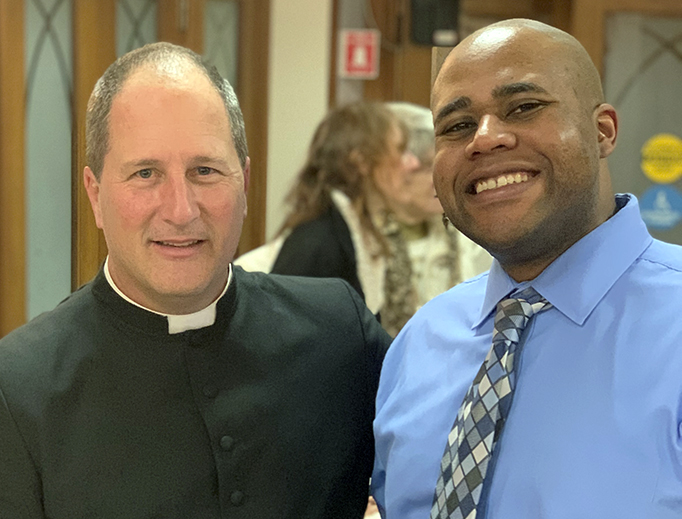Traditional Latin Mass Returns to West Point
“The serious tone, the precision of what was happening ... that was very powerful to me as a military man.”

Until a few weeks ago, it had been nearly six decades since a Solemn High Mass was celebrated in the Catholic chapel at the U.S. Military Academy at West Point.
Through the efforts of Capt. Randy Shed, a group from St. Mary’s Parish in Norwalk, Connecticut, brought the traditional high Mass to Most Holy Trinity Catholic Chapel here Jan. 11.
Captain Shed, a West Point tactical officer who entered the Church nearly three years ago, said when he went to an extraordinary form Low Mass, he was impressed with the care and discipline reflected in it. “The serious tone, the precision of what was happening ... that was very powerful to me as a military man.” He began reading about the traditional Latin Mass and about a year ago, attended a Solemn High Mass at St. Mary’s in Norwalk. Through a social media connection with a St. Mary’s parishioner, he learned that the parish often takes the traditional Latin Mass on the road. Shed proposed bringing it to Most Holy Trinity at West Point.
After the West Point chaplain, Col. Matthew Pawlikowski, and Maj. Sean Magnuson, the Catholic community chaplain, agreed, a date was chosen and three priests – a celebrant, deacon and subdeacon – two masters of ceremonies, nine altar servers and nine schola members converged on Most Holy Trinity.
Father Donald Kloster, parochial vicar of St. Mary’s and celebrant for the Mass, said the chapel had the required vessels and the group had only to take a missal, vestments, and surplices and cassocks. The primary challenge was the altar, which had been shortened and moved out from the wall and separated from the tabernacle as part of the liturgical reforms following the Second Vatican Council of 1962-65. He explained that the tabernacle remains on the wall and that the altar has a ledge on the front for flowers, which restricts movement when facing the altar.
About half of the 120 people who attended the Mass were cadets and officers and their families and the rest were civilians from New York and Connecticut. Many had never experienced a Solemn High Mass before and expressed interest in being notified if there is another at the chapel, Captain Shed said. “A lot of people thought it was absolutely beautiful. They at times may not have known exactly which part was taking place, but . . . the beauty of the traditional Latin Mass is recognizable as Catholic... While some are not familiar with it, because we’re Catholic, we recognize it and recognize that it’s ours, and that authenticity speaks and is present in the traditional Latin Mass.”
He added: “I think people are hungering to find out more. One of the beautiful responses I had [on Facebook] was ‘thank you for finding something forgotten and returning it to our church.”
Captain Shed, a 2008 West Point graduate, said he thinks military people especially recognize the solemnity conveyed by the traditional Mass. “And Mass being sacrifice it should be serious business.” He said he understands that the sacrifice is still wholly present in the ordinary form of the Mass and does not intend his appreciation of the traditional Mass as criticism of the newer rite. “But once I experienced the extraordinary form and prayed that, I was hooked.”
Although he continues to worship at the West Point chapel, where Mass in the ordinary form is celebrated exclusively, he said whenever he is reassigned, he plans to look for parishes that offer the extraordinary form.

Father Donald Kloster and Capt. Randy Shed












